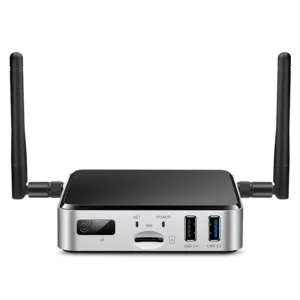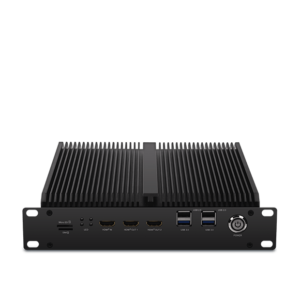AI on Side Units vs. Cloud AI: Benefits and Cons
AI on Side Units vs. Cloud AI: Benefits and Cons
Blog Article
Unlocking the Power of AI on Side Devices
Real-World Programs of AI on Side Products
Synthetic intelligence (AI) is no further limited to the region of large, centralized information centers. As a result of breakthroughs in technology, side products today enjoy an integral role in deploying AI straight where data is generated. But what does AI on edge products suggest, and exactly why is it producing this kind of excitement? Here, we'll investigate how arm edge ai works in the real world through side products and learn their wide selection of sensible applications.

What is AI on Edge Devices?
AI on side units identifies deploying artificial intelligence formulas on devices like smartphones, cameras, drones, or IoT sensors. They do not require usage of centralized hosts for control knowledge; as an alternative, they perform examination and decisions locally, making the method faster, more effective, and usually more secure.
The "edge" here only identifies processing performed close to or at the foundation of data generation, in place of depending on the cloud. That change is pushed by the demands for real-time information handling and the need to minimize latency, increase privacy, and reduce bandwidth usage.
Important Real-World Programs of Side AI
1. Wise Detective
AI-powered cameras equipped with skin acceptance, motion recognition, and anomaly recognition are transforming detective systems. Edge units in this domain can analyze movie revenues in real-time to identify dubious actions, remove fake alarms, and increase community safety. Like, AI algorithms may discover unusual movements and attentive authorities immediately without the necessity to send movie knowledge to a main machine for analysis.
2. Healthcare Tracking
Wearable devices and portable medical equipment are leveraging m.2 ai accelerator for controlling wellness information more efficiently. Edge-based AI in units like health trackers and smartwatches monitors users' vitals, such as for example heart rate, air degrees, or blood force, in real-time. These systems analyze knowledge locally and provide instantaneous feedback, paving just how for quicker treatment during emergencies.
Beyond wearables, sophisticated medical imaging products equipped with on-device AI may find signals of conditions like cancer, enabling earlier diagnoses even yet in remote areas without net connectivity.
3. Autonomous Vehicles
Self-driving cars are among probably the most well-known types of side AI in action. With sensors, cameras, and LiDAR systems providing as knowledge sources, AI computations take place onboard these cars to produce split-second decisions. From detecting pedestrians and obstacles to navigating town streets, side AI ensures that the car operates easily and efficiently. The real-time processing capability of side devices reduces the reliance on high-latency cloud systems, ensuring security in life-critical scenarios.
4. Retail Analytics
Side units in retail conditions are helping organizations analyze client behavior. Smart cabinets and AI-equipped cameras may identify customer preferences, monitor catalog, and even modify in-store experiences in actual time. The data made from these units assists suppliers make knowledgeable choices, increase customer care, and enhance stock management.

5. Industrial IoT
Factories and commercial crops are adopting edge AI to revolutionize their monitoring and automation processes. AI-powered receptors on equipment identify possible problems a long time before they lead to costly failures. Predictive maintenance pushed by edge AI reduces downtime, enhances output, and assures security on the manufacturing floor.
6. Individualized Activities in Customer Units
Your smartphone is a leading exemplory case of how side AI personalizes person experiences. Characteristics such as for example voice personnel, versatile camera controls, and on-device language interpretation use real-time AI to answer individual wants without giving painful and sensitive knowledge to additional servers. This fosters equally comfort and privacy for the end user.
The Rising Impact of Edge AI
The usage of AI on edge products continues to surge, pushed by industries' raising need for low-latency, real-time research, and larger knowledge privacy. Their applications are reshaping industries ranging from healthcare and automotive to public safety and retail. By adding AI's energy nearer to wherever information is generated, edge devices are not just improving effectiveness but also demonstrating the unlimited potential of innovation in the present connected world. Report this page